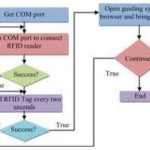
Analysis model used, based on techno-economic principles by using the capacity and coverage estimation methods to determine the design of LTE technology and DCF methods to analyze and measure the economic feasibility of costs incurred for the implementation of these LTE. This thesis analyzed the technology and economics of the implementation of LTE Release 8 on existing network operators using the scenario of co-existance. LTE Release 8 is the standard technology-based mobile broadband all- IP issued by the 3GPP. Technology Long Term Evolution (LTE) can be the answer to that need. Efforts to improve service by implementing technology is more reliable in terms of access speed and capacity and coverage expansion. The development of information technology and telecommunication services leading to mobile broadband (MBB).Besides, the 3G operator business competition in Indonesia is very strict with the presence of several operators coupled with an increasing number of subscriber data is significant since the launch of 3G technology, so that each operator must be able to improve service quality both in terms of speed, capacity and coverage to face these challenges. General philosophy of the design of telecommunications networks are getting the best performance with minimal implementation costs. Dibandingkan dengan penggelaran 4G LTE pada frekuensi 900MHz dengan bandwidth 5MHz diperoleh nilai NPV positif sebesar Rp 61.075.272.890, namun IRR hanya sebesar 1,71% (dibawah suku bunga perbankan), dengan nilai Pay Back Period 4 Tahun 1 Bulan Keywords: LTE, tekno-ekonomi, coverage planning, capacity estimation, DCF, 900MHz, 1800MHz, co-exixtance 2G/3G/4G.
Diperoleh diperoleh nilai NPV positif sebesar Rp107.749.194.676 dan IRR sebesar 31.07%, dengan nilai Pay Back Period 3 Tahun 6 Bulan. Hasil dari penelitian menunjukan bahwa implementasi migrasi jaringan 2G/3G ke 4G LTE pada frekuensi 1800MHz menggunakan bandwidth 10 MHz dari perhitungan ekonomi menghasilkan hasil yang lebih efisien dan layak untuk di implementasikan.


Pada tesis ini model analisa yang digunakan berdasarkan prinsip tekno-ekonomi dengan metoda capacity estimation dan coverage planning untuk menentukan perancangan teknologi 4G LTE dan metoda DCF untuk menganalisa secara ekonomi dalam mengukur kelayakan biaya yang dikeluarkan untuk implementasi 4G LTE tersebut dengan memanfaatkan resource spectrum frekuensi secara efisien pada operator selluler Indosat Ooredoo. Penelitian dalam tesis ini mem-fokuskan pada analisis tekno ekonomi implementasi secara co-existance antara jaringan 2G/3G existing dan 4G LTE sesuai dengan tingkat prosentase pertumbuhan pelanggan nirkabel layanan data (2015-2019) dengan membandingkan mana yang lebih ekonomis apakah menggunakan resource spektrum frekuensi di 900MHz atau 1800MHz. Pemanfaatan resource spectrum secara efisien yang semaksimal mungkin merupakan salah satu solusi untuk mengatasi biaya investasi yang tinggi. Tantangan penyediaan jaringan komunikasi nirkabel yang handal dengan kapasitas sistem yang tinggi tidak terlepas dari biaya investasi yang tinggi.


 0 kommentar(er)
0 kommentar(er)
